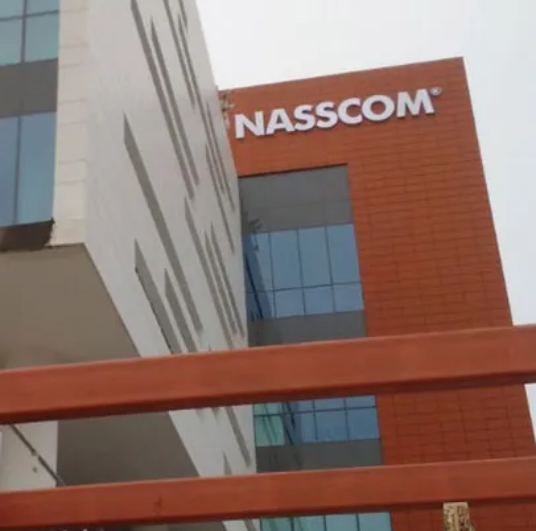Indian IT Industry’s Forecast – Financial Express, 1979.
Financial Express 1979 article - forecast on Indian IT industry
Financial Express Monday January 1st, 1979
Computer Software export to bloom
By K U Hegde
Computer software export can earn as much exchange as the diamond industry, according to Mr Harish Mehta, Director of Hinditron Computer systems and consultants Pvt Ltd. Mr Mehta told Financial Express that in 1979 his company will be providing hardware software training services to Digital Equipment Corporation (DEC) customers in the US, UK, Burma, Nigeria and West Asia besides developing real time commercial applications for DEC customers in the US.
Hinditron has achieved a breakthrough in the export market mainly due to the fact that it is providing its services at half the international cost.
Hinditron is a group of companies launched 12 years ago and is now headed by a band of ______ technocrats consisting of Mr KS Sonawala, Mr Pravin Gandhi and Mr Harish S Mehta, all educated and trained in the US.
India has the third largest skilled manpower. _____ and experience has shown that Indians are second in ____ in executing any job assigned to them. Mr Mehta feels the computer field will prove both a challenge and opportunity for Indians to prove their skill and get established in the field on a permanent basis.
The world trade in computers and office equipment etc record an annual rate of _____ $10 billion. Of this, __ percent is made up of exports to the US mainly in mainframe, ______, peripherals, replacements parts and ___________.
With the advent of minis and micros many countries have been able to build up self reliant computer industries. While general purpose computers are made in at least 15 different countries, ___ computer are produced in 50 of them including cuba, india, china, brazil and Poland.
The Electronics Corporation of India Ltd (ECIL) has over the years produced TDC 312, TDC 316 and Micro 78 systems, international computers. Indian Manufacture Ltd (ICIM) have been licensed to make ICT 2054 systems. Apart from these, a host of micro processor based systems are being made by private sector units to cater to financial inventory control and other business applications.
It is expected that during the next 5 years about 500 mini computers and 150 data entry devices will be installed. During the same period, on an average 20 medium to large computer systems per year will be imported. As of today, there are more than 425 computers in the country.
From a modest beginning 10 years ago, HInditron group has grown in to one of the largest system houses in India. It has so far provided support to more than 100 DEC computed systems throughout India. The companys other services include hardware facilities and maintenance, software services and support and training facilities.
Some of the major jobs being done by Hinditron are installing production control system for a ship manufacturing company, developing a production planning and control system for a drug firm to handle inventory management, order planning, cost control, etc.
Besides the above, the company has developed a ____ accounting and job ____ system to meet the needs of the engineering industry and a survey analysis package for detailed analysis of consumer behavior in respect of knowledge, consumption, liking and preference for brand name.
Mr Mehta feels that based on the experience gained in India, Hinditron , in a big way , can launch in the foreign markets. It has already secured a major contract in Burma besides West Asia. Again, there is possibility of the principal, Digital Equipment Corporation or other computer giants offering Hinditron consultancy and other jobs on a sub controlling basis.
The Digital Equipment Corporation according to Mr Mehta is one of the top ten fastest growing corporations in the US. Infact, DEC produced its first micro computer in a garage. Today, its annual sales exceed $1.6 billion. It employs 40,000 people worldwide and has installed over 100,000 computers. It is predicted that by 1992 DEC will become the No. 2 in production.
Mr Mehta says computer does reduce total number of ____ able jobs. It may displace persons from one particular industry or one sector of the industry. But, it helps in increasing efficiency and productivity. It ______ resources for selling in/to morei ndustries and thereby creating additional ____.
The computer industry is the most job-oriented industry in the US. It is soon going to replace the automobile industry as the no. 1 job provider. Today the US auto industry is absorbing one out of every 11 persons. It is expected that the information industry consisting of computers and allied services will soon overtake the auto industry.
Mr Mehta says that there are many first-grade Indian computer engineers now serving in the US. To develop the indigenous computer industry in India, ways and means should be found to attract these young engineers now serving in the US. They know the latest know-how, have gained experience in the field and are therefore ideal in helping the country in developing its own computer technology. They will also help to overcome the problem ______ ________ industry all over the world.
Proliferation of _____ memory devices, microprocessors and shrinking _______ costs are revolutioninsing the high speed computing and distributed processing fields. Advances in semiconductors for technology have been made possible by significant break throughs in materials and _______ and production techniques. ____ chip wafer material and processing advances have resulted in wafer sizes of 100-125 mm as compared to 25mm to __ mm.
Chip sizes have increased to 40 sq mm today from 8.5 sq mm in the early 1960s.
enabling improvement in quality and price levels.





















